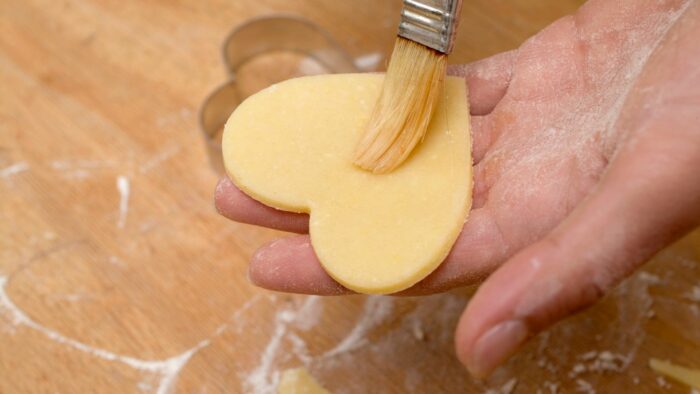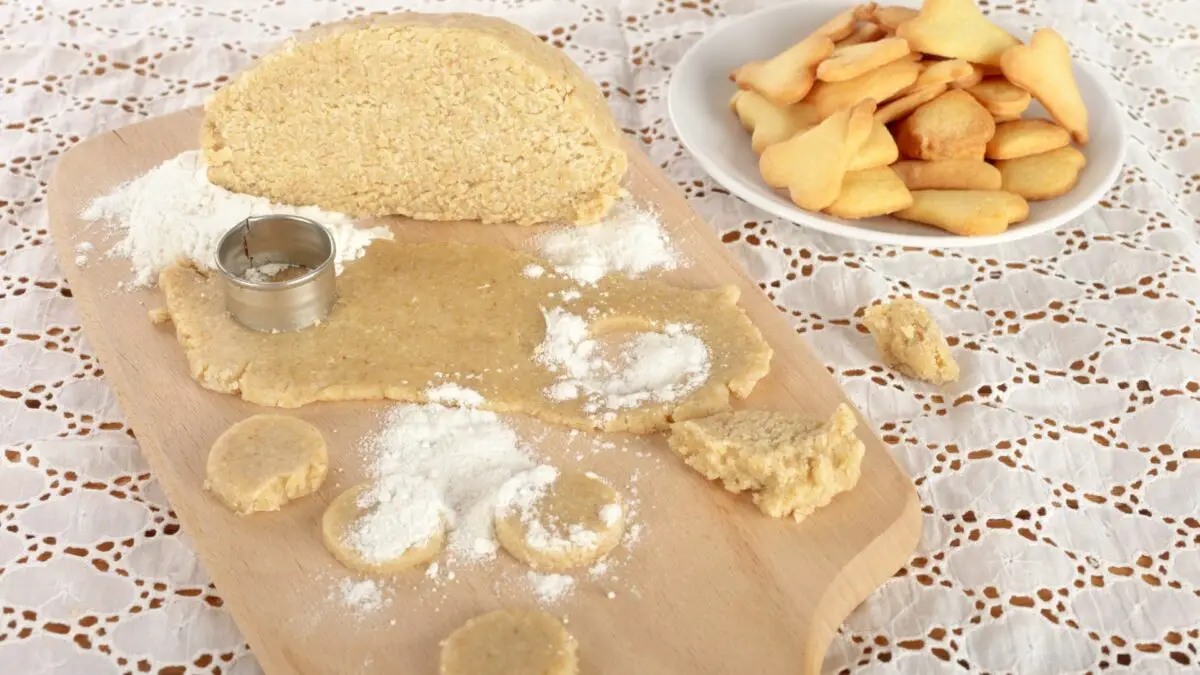Last Updated on September 24, 2022
What to add to dry cookie dough to fix it? Today, we’ll look at 2 easy ways you can add moisture to a crumbly dry dough to save it before baking!
Sometimes, store-bought cookies can’t satisfy your cravings. Only homemade recipes will do the thing. So, it’s almost devastating when you put in the effort, just for the dough to come out dry and crumbly!
So, we have created some easy and effective ways you can fix this dough. Our main methods involve adding liquid and fat. But, we also briefly covered other solutions that may not require any additions. So, read on to learn how we do this!
Identifying A Dry Cookie
Before looking at what to add to dry cookie dough, you first need to understand when the dough is dry.
If a recipe works with a cookie dough that will be rolled, the dough needs to have a uniform soft, pliable, smooth texture. This differs from many drop cookie recipes, which are sometimes drier in texture. But, these cookies are scooped, not rolled. So, they don’t have to have the texture of traditional cookie dough.
If your dough has a crumbly texture after it has been mixed, then it is too dry. The crumbly texture will prevent you from rolling out the dough and moving it around. It will also cause the cookies to come out dry and crumble after they are baked.
Those are pretty much the only tell-tale signs of a dry cookie dough recipe. A crumbly unbaked dough, a crumbly baked cookie, and a dry or hard baked cookie texture.
Causes of dry cookie dough
There are two main causes of a dry cookie dough. The recipe that doesn’t work (less likely) and inaccurate measuring.
If you truly have a recipe that doesn’t work, the recipe either contains too little fat or liquid. Fat helps bind the cookie dough ingredients while adding moisture. It also tenderizes and adds flavor.
The liquid ingredient adds the most moisture to a cookie dough recipe. These include water, milk, cream, and juice. These ingredients don’t have many other functions. So, if a cookie dough recipe lacks them, you’ll know about it.
Then, the far more likely reason for a dry cookie dough is caused by inaccurate measuring. People either use inaccurate measuring tools, eyeball the measurements or lost count of how much they have already added.
There are also other reasons that may be the cause of a dry cookie dough for some recipes (but not all). The first is because the cookie dough has been overmixed. This causes too much gluten to develop, which in turn causes more moisture to be absorbed.
And secondly, the dough could have dried out in the fridge when you rested it.

What To Add To Dry Cookie Dough? 2 Easy Methods
Now that you know the main reasons cookie dough becomes dry, let’s have a look at what to add to dry cookie dough.
Method 1: Add more liquid
If you have worked your dough and see that it is crumbly and dry, you can add a teaspoon of water, milk, or cream. If the recipe contains juice, then add juice instead.
You only need to add 1 teaspoon at first. More often than not, it’s enough to save the dry dough. Make sure you work it in properly before adding more. If the dough is still dry, add 1/2 teaspoon of liquid at a time.
Water is a great addition if you don’t want to change the flavor and color of the cookie. Milk and cream will both add a slight sweetness, help make the cookie golden brown, and help add moisture.
Method 2: Add some fat
Fat is more difficult to add than liquid. This is because fat has many functions in baking. If you add too much, your cookies will spread and could become oily. If you add too little, it could result in a dry cookie texture.
Only add a teaspoon of fat (butter, shortening, or oil) to the dough. Knead it in well. If the dough is still too dry after that, rather add liquid instead.
Add the same type of fat that the recipe already contains.
Other fixes (not additions)
Another fix (that isn’t an addition) is to avoid overworking the dough. As we’ve mentioned, when too much gluten develops it leaves the dough dry and hard.
Also, when resting the dough, make sure to wrap it properly to avoid it drying out in the fridge or at room temperature.

In Conclusion
As you can see, the answer to “What to add to dry cookie dough?” is easier than you may think. Ultimately, you can choose between water, milk, cream, juice, butter, shortening, or oil.
If you enjoyed this informative article, or you run into other baking problems, browse our website for some easy solutions.
FAQ
How do you make dry cookie dough wet?
The best way to soften cookie dough is by adding more liquid. Milk or cream is your best option. However, something like water or fruit juice will work just as well. Otherwise, you can try to soften the dough with a little bit of heat.
What can you do with hard cookie dough?
If your cookie dough is too hard, you can try to soften it with liquids. But, this doesn't always work. So instead, many people incorporate the hard cookie dough into other dishes. Ice cream, cake pops, and brownies are popular options people love to try. You can even bake them and make a crumble out of the hard and dry cookies.
Can you add milk to cookie dough?
If your cookie dough is dry, you should add more liquid to it. And the best ingredient to add is milk! Milk will add a rich sweet flavor to the cookies and help give them a golden brown color. You can obviously also use other liquids. But again, milk is the best option.
What happens when cookie dough is too dry?
If your cookie dough is too dry, it will cause the texture of the cookie to be crumbly and ultimately, fall apart. It also causes a loss in flavor because the moisture doesn't help keep it in. Dry cookie dough will also make it incredibly difficult to work with and shape.

Lindy Van Schalkwyk is a culinary specialist with a background in Advanced Cooking, Advanced Pâtisserie, Media Communications and Nutrition. She has gained invaluable experience in the culinary industry having worked in some of the top restaurants in Africa in 2016 and 2017. Her expertise in nutrition has enabled her to develop recipes for special dietary needs. In 2018, Lindy began working in the Food Media industry, focusing on recipe development, recipe writing, food writing and food styling.


